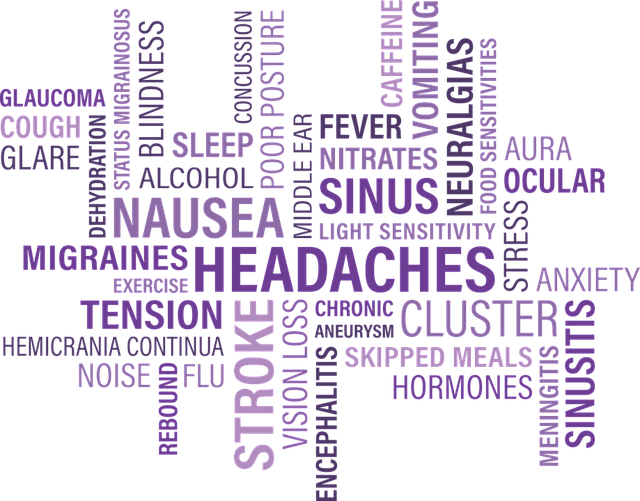

Dr Chris Airey
Around the age of 30, male sex hormones such as testosterone begin to decline. The media have called this the ‘male menopause’, but this is an entirely normal part of ageing and is not the same as female menopause.
If our hormones become out of balance or drop too low, we can feel irritated, tired, gain weight, and lose our sex drive. Low testosterone levels are usually the main culprit for this. As you age, taking care of and monitoring your hormone health is essential to avoid symptoms that can impact your everyday life.
You may be eligible for hormone replacement therapy (HRT) if you have a hormone imbalance. Below we look at HRT in more detail, including the symptoms of hormone imbalance, how to measure your hormone levels, and the risks and benefits of using HRT for men.

What Is Hormone Replacement Therapy (HRT) for Men?
Hormone replacement therapy (HRT) is used in men who need help regulating their hormone levels. Hormone therapy uses synthetic hormones that act like your body’s hormones. Therefore, it restores hormones to a healthy level so your body can function normally.
The most common hormone replacement therapy for men is testosterone replacement therapy (TRT). This treatment increases testosterone production when your body cannot produce enough on its own. HRT or testosterone therapy can be prescribed for testosterone deficiency. In medical terms, low testosterone is called male hypogonadism.
What Is Testosterone?
To understand how low testosterone can affect your life, it’s important to know what testosterone is and how it works. Testosterone is a male hormone known as an androgen. It is produced mainly in the testicles.
During development in the womb, testosterone stimulates the growth of the testicles and penis. It is responsible for developing and maintaining male characteristics but plays other vital roles in the body.
As you reach puberty, testosterone reaches an all-time high. This creates a change in your body which causes more body hair, an increased libido, and a change in voice. Testosterone’s primary responsibilities in the body include:
● Production of sperm
● Increased sex drive
● Maintenance of healthy bones by increasing bone density
● Building muscle mass and strength
● Production and maintenance of a healthy red blood cell level
● Protection of your organs and brain
● Regulation of mood
● Healthy distribution of body fat
● Decreasing inflammation
● Promoting body and facial hair growth
Without enough testosterone, your body cannot function optimally. This is where testosterone replacement therapy comes in.

What Happens to Testosterone as You Age?
As you age, your body’s testosterone levels decrease gradually. This happens around the age of 30, but it can occur earlier in some men. Natural testosterone levels drop by around 1% each year and is unlikely to cause significant symptoms. Low testosterone levels become an issue when they decrease more than 1% yearly or drop too low.
As your body and testicles age, they become incapable of producing the same testosterone levels. This gradually causes decreased energy, increased weight around the stomach, fluctuating memory and mood, and a lower sex drive. To counteract this, a doctor may prescribe testosterone replacement therapy.
How Is Your Life Affected by Hormone Imbalance?
The symptoms of gradually lowered testosterone levels are part and parcel of ageing. If your hormones drop too quickly, you will notice significant symptoms which can negatively influence your daily life.
Low testosterone levels are known as ‘testosterone deficiency’, ‘andropause’, or ‘male hypogonadism’. All these terms refer to a male clinically diagnosed with low testosterone levels.
:max_bytes(150000):strip_icc()/GettyImages-548313037-Westend61-56a516255f9b58b7d0dac859.jpg)
What Are Symptoms of Low T?
As testosterone regulates and maintains so many bodily functions, the symptoms of low testosterone can vary. Some commonly known symptoms of low testosterone include a lowered sex drive and difficulty getting an erection.
Less commonly known symptoms of low testosterone include:
● A lower sperm count
● A change in mood, such as feeling irritable, sad, or angry
● Weight gain, especially in areas around the stomach and midsection
● A decrease in energy levels or feeling tired all the time
● A reduction in muscle mass
● Trouble thinking clearly or difficulty with memory
● Hair loss, or a decline in the growth of facial and body hair
● Difficulty sleeping
● Reduced stamina, which can make it harder to play sports or exercise
Low testosterone can also increase the risk of certain medical conditions, such as:
● Diabetes
● Depression and anxiety
● Heart disease
● Stroke
● Diseases of the respiratory system
● A lower mortality rate
● Osteoporosis, which is a thinning of the bones caused by low bone density
What’s Irritable Male Syndrome?
‘Irritable male syndrome’ is another term coined by the media to describe a testosterone imbalance. As testosterone can help regulate mood, it can directly impact how you feel and act towards others when it becomes low. You or those close to you may have noticed you are more irritable than usual, have a ‘short fuse’, or have withdrawn from things you like.
These are all signs of testosterone deficiency and it can be challenging to manage without the proper treatment. Low testosterone could be to blame if you notice a change in mood as you age.
How Do You Measure Your Hormone Levels?
You can measure your hormone levels with a hormone blood test, which you can get at:
● A private clinic
● An online pharmacy
● Your GP
You can also measure your hormone levels with an at-home blood test kit. Once you have taken a sample, you will send it to a lab to be tested.
A hormone blood test will measure free and total testosterone levels and hormones like luteinizing hormone and prostate-specific antigen. The test will also check for high follicle-stimulating hormone (FSH) levels. Raised follicle-stimulating hormone levels can be a cause of testosterone deficiency syndrome.
A doctor will check if each hormone is within the normal range. Normal serum testosterone levels are around 350 to 750 ng/dL.
How Do You Know If HRT Is Right for You?
The only way to know if hormone replacement therapy is the right choice is by taking a blood test. This can give a healthcare professional a comprehensive picture of your hormonal health to determine the root cause of your symptoms, such as low testosterone.
You can be prescribed testosterone replacement therapy if you have low testosterone. Your doctor will also check your medical history and discuss current medications to ensure that testosterone replacement therapy is the right choice. Ultimately, the decision is down to whether you want to improve your symptoms through testosterone or hormone therapy.
Although you can improve testosterone levels through a change in lifestyle and with the help of natural testosterone boosters, testosterone replacement therapy is the quickest and most effective option.
At What Age Does HRT Start for Men?
Any man can use hormone replacement therapy if they need it. A doctor will only prescribe HRT if you have symptoms affecting your life and have been diagnosed with low testosterone or hormone levels.
Generally, HRT is used in men over 30 as natural hormone levels decrease.
What’s the Difference Between HRT and TRT?
HRT and TRT are often used interchangeably, but they are slightly different. Both treatments replace natural hormone levels in your body to improve symptoms but contain different hormones.
Testosterone replacement therapy replaces declining testosterone levels when your body cannot do this itself. The only thing that testosterone replacement therapy is trying to solve is testosterone deficiency.
Hormone replacement therapy may contain synthetic testosterone and other hormones associated with your symptoms. HRT is used for hormonal imbalances relating to one or several hormones.
Which treatment you need depends on your hormone levels and whether these affect your symptoms. Your doctor will discuss HRT and TRT in more detail once you are diagnosed.
Is Natural Male HRT Better Than Traditional HRT?
Natural male hormone replacement therapy is a medication that contains natural hormones. This means the hormones have been taken from animals or plants rather than made in a lab.
Traditional hormone replacement therapy contains synthesised hormones created in a lab to replicate natural hormones. Each can benefit someone with a hormonal imbalance, so it’s hard to say whether one is better.
The best way to determine which works best for you is by trying both options and seeing how your symptoms improve.
Types of HRT for Men
Hormone replacement therapy comes in many types, meaning there is a treatment out there to suit every man’s needs. Below are the different types of HRT for men:
- The most common form of HRT is a subcutaneous injection, a tiny needle injecting HRT directly into your fatty tissue. This allows the medication to be absorbed quickly into the bloodstream.
- HRT lozenges are placed under the tongue, which will dissolve into the body quickly. These are preferable for men who do not want to use an injection.
- You can also take HRT in the form of a cream which is applied to the skin. The testes are the most common place to use HRT cream, as there is a high blood supply here, meaning the treatment can be easily absorbed.
- HRT gels are very similar to creams but may be slightly easier to apply.
- HRT tablets are an oral form of hormone treatment. Unfortunately, HRT tablets are not as effective as other forms, as they must pass through the digestive system before entering the bloodstream. There is also an increased risk of side effects when HRT needs to be digested.
- HRT patches are a daily patch applied to the skin, allowing HRT to be absorbed into the bloodstream slowly. You must wear each patch for 24 hours before replacing it with a fresh one. Although effective, patches can be frustrating if you do a lot of physical activity that causes you to sweat, increasing the risk of the patch losing its stickiness.
- The final HRT treatment type is a pellet. These are implanted surgically under the skin and will release your HRT dose slowly. You only need to get a new HRT pellet every three months, meaning you don’t need to remember a daily dose.
Risks of HRT for Men
Hormone replacement therapy can have a few risks and side effects, although most are uncommon or minor.
Potential risks of HRT for men include:
● Acne or oily skin
● Headaches
● Hair loss or thinning
● Feeling the need to urinate more often
● Water or fluid retention, known as oedema
● Injection site reactions if you use injectable HRT, such as a rash, irritation, or a lump
Some more serious side effects can occur while taking hormone or testosterone replacement therapy. If you notice any of the following, speak to your doctor straight away:
● Shrinking of the testes
● Nausea or vomiting
● Gynecomastia, which is an enlargement of breast tissue often associated with swelling or pain
● Yellowing of the skin or eyes
● Worsening of obstructive sleep apnoea for those who already have the condition
It can also cause:
● Decreased sperm count
● High cholesterol
● An increased risk of type 2 diabetes through a continuous increase in blood sugar levels
● A significant increase in red blood cells, which can cause high blood pressure, eyesight problems, or pain in the chest, muscles, or joints
You should not take HRT or testosterone treatment if you have prostate cancer or high prostate-specific antigen (PSA) levels. Raised PSA levels can be a sign of prostate cancer or another condition affecting your prostate, such as benign prostatic hyperplasia.
Testosterone treatment can increase the rate of development of prostate cancer cells or worsen benign prostatic hyperplasia.
Benefits of HRT for Men
Hormone replacement therapy has many potential benefits. Additionally, your doctor will ensure that HRT is safe for you before taking it and will monitor your dose to lower the chance of side effects.
The benefits of hormone therapy include:
● Better sleep quality and duration
● Improved brain function, such as better memory and focus
● Lowered risk of osteoporosis due to an increase in bone density
● Improved sexual function, including easier and harder erections and increased sex drive
● Improved strength and muscle mass
● Better energy levels
● Improved mood
● Boosted confidence
How Can I Find an HRT Clinic?
Luckily, male hormone replacement therapy clinics are easy to come by. You can use a private HRT clinic or be referred to an HRT clinic through the NHS.
There are also online pharmacies which can test your hormone levels and prescribe HRT through an online doctor service. Do your research and only get HRT from a trusted and regulated clinic or pharmacy.
HRT is a therapy used to treat hormonal imbalances in men who have significant symptoms and cannot produce enough on their own. A common form of HRT is testosterone replacement therapy, used to treat low testosterone or testosterone deficiency.
To use hormone or testosterone replacement therapy, you need to get diagnosed with a hormone deficiency by taking a blood test. This can improve symptoms and leave you feeling more energised, healthier, and happier.










